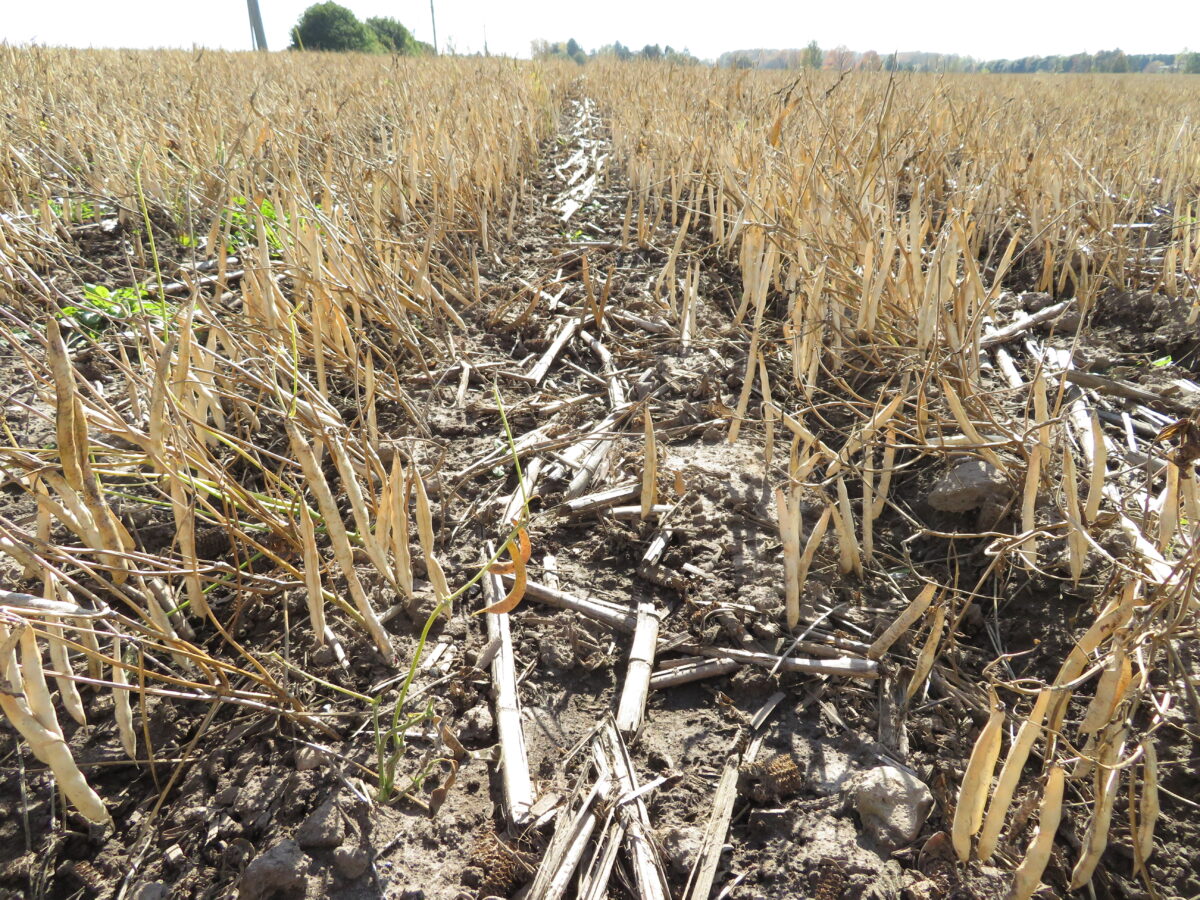Bean production practices such as row width, market classes grown, and the cultivar architecture have changed over time. Collectively, these changes could have a dramatic effect on grower decisions for plant populations for dry beans. Currently, there is little information on the impact of seeding rate on the yield of large seed dry beans in…Continue readingLarge Seeded Bean Seeding Rate Study
Author: Chris Gillard
Dry Bean Agronomy & Pest Management, University of Guelph-Ridgetown
Growers plant beans earlier in regions with fewer crop heat units (CHU) to avoid losses from fall frost, but the Ontario growing season is getting longer. Bean market classes grown, plant architecture and production practices (e.g. row width) are changing over time. Current guidelines provide recommendations for planting date and seeding rate independently, while seeding…Continue readingLarge Seeded Bean Seeding Date and Seeding Rate Study
Current production guidelines have separate recommendations for planting dates and seeding rates, while current seeding rate recommendations varies with row width. Growers typically plant beans earlier in lower crop heat units (CHU) regions, to reduce the risk of damage from fall frost. Many people believe that our growing season is increasing over time, which will…Continue readingSmall Seeded Bean Seeding Date and Seeding Rate Study
Plant population studies from the 1980’s developed recommendations for narrow row production. Since that time, there have been dramatic changes in production practices including row width, market class selection, and the plant architecture of cultivars. Collectively, these changes should have a dramatic effect on grower decisions for plant populations for dry beans. Recent planting technology…Continue readingSmall Seeded Bean Seeding Rate Study on 15″ Rows
Growers often apply fungicides to manage foliar diseases such as anthracnose, and tankmix a foliar fertilizer when they apply a fungicide to reduce application costs. It is unknown if the tankmix reduces anthracnose control from the fungicide. The purpose of this study was to measure fungicide performance under moderate to severe anthracnose pressure, with and…Continue readingAnthracnose Control from Tankmixing a Fertilizer with a Fungicide
Sprayer technology is available to apply pesticides at any time – day or night. Some growers rely on this technology to manage a larger crop area. Previous studies have found herbicides such as glyphosate are more effective when applied at certain times of the day. This study looks for a similar response from four day/night…Continue readingTime of Day for Fungicide Application Does Not Impact Disease Control
A reduction in air pollution has dramatically reduced sulphur deposited into Ontario soils over the last 40 years. Sulphur is highly related to nitrogen in crop plants – sulphur is a key component of leaf chlorophyll and nitrogen fixation nodules. In addition, sulphur is a part of methionine and cysteine, two essential amino acids used…Continue readingSulphur Fertilizer in Dry Bean 2019-2023
Chris Gillard and his research staff conduct many different dry bean research trials at the University of Guelph – Huron Research Station each year. The trials vary from year to year and cover a range of research topics. The results are summarized annually and can be viewed at the links below. Note that research must…Continue readingHuron Research Station Annual Reports
AgTiv is a biological product (Premier Tech Agriculture, Quebec, Canada) that contains mycorrhizae (Glomus intraradices) spores. The product Myconate (Plant Health Care, Raleigh NC) contains the isoflavone formononetin. Both products have a powder formulation applied as a seed treatment, and a liquid formulation applied with a liquid fertilizer at planting. Product claims include increased plant…Continue readingMycorrhizae Products for Beans 2016-2017
Eragon was the best crop desiccant but it was weak on lambsquarters and foxtail. Reglone and Ignite were strong crop desiccants, and they had high scores for all weed species tested.Continue readingComparing harvest aids for beans, 2010-2012: Crop and weed desiccation
